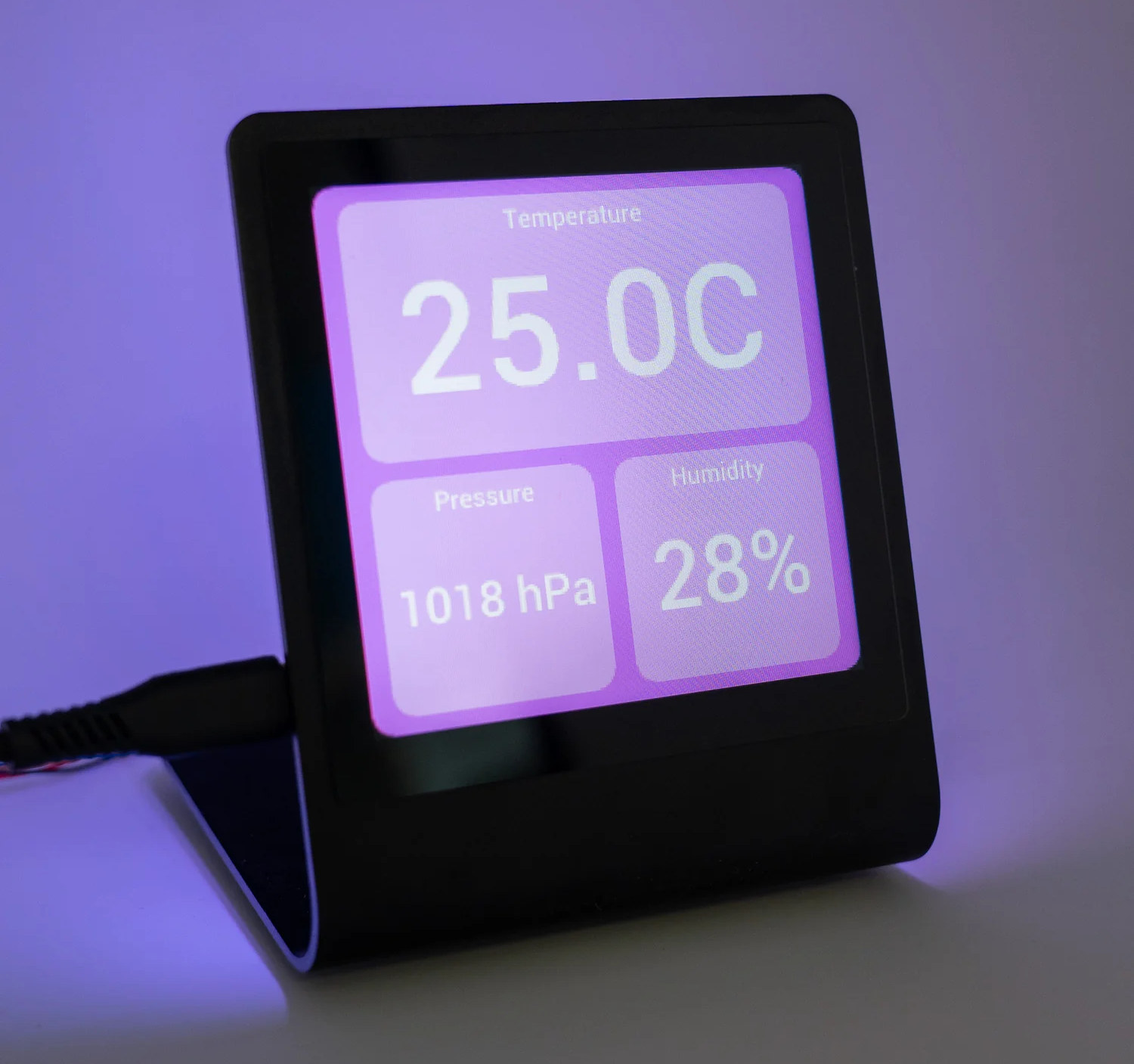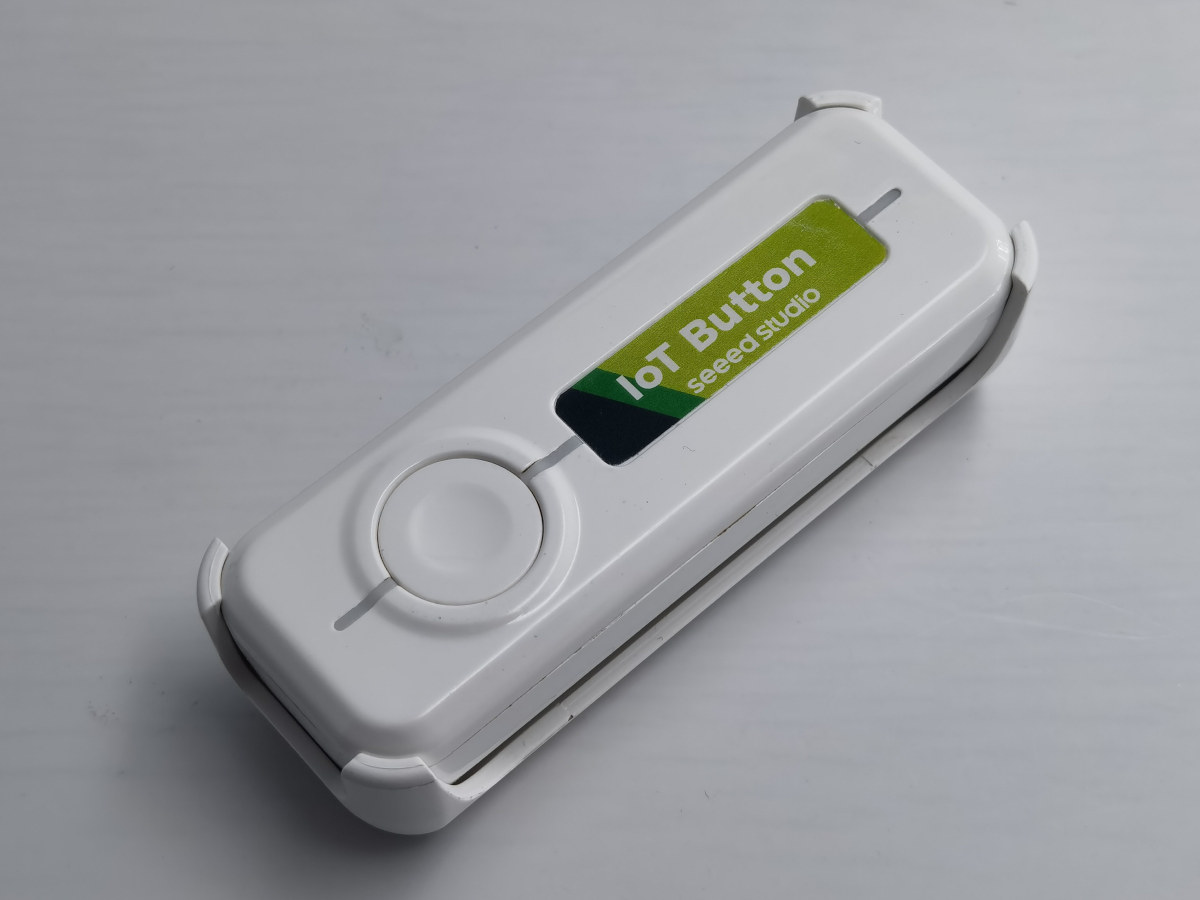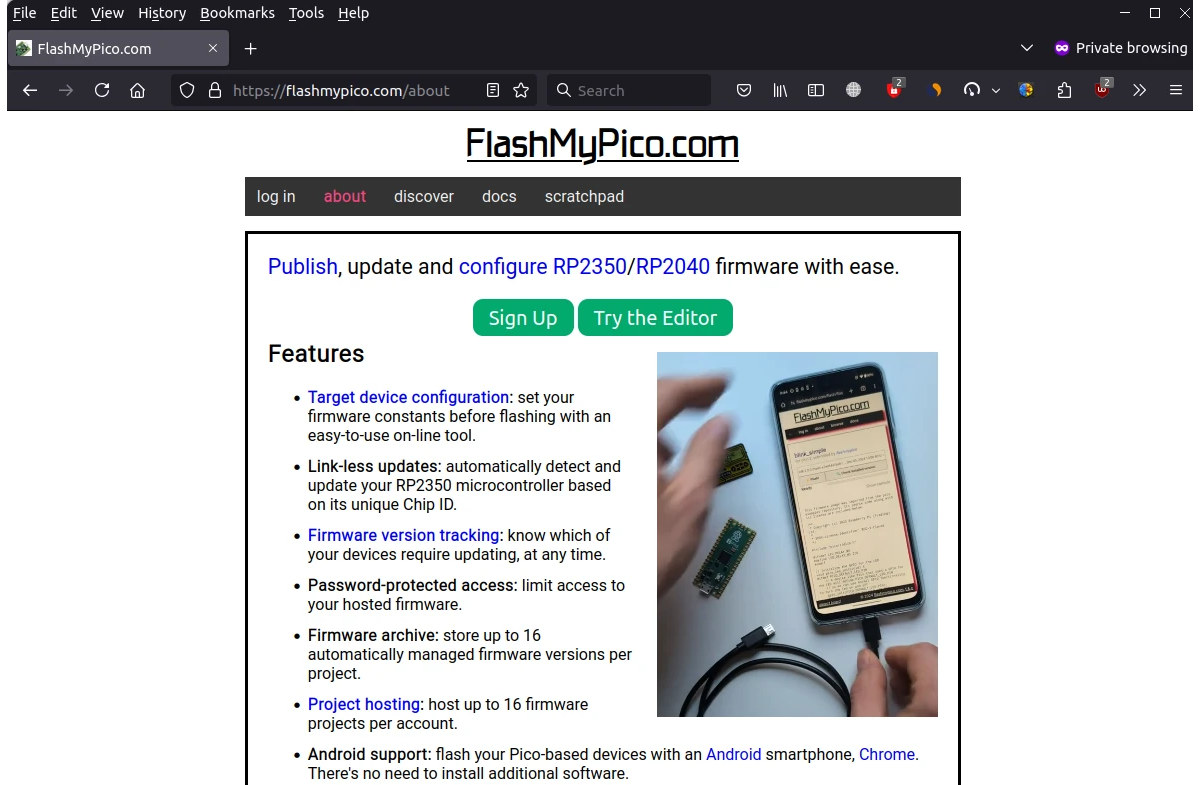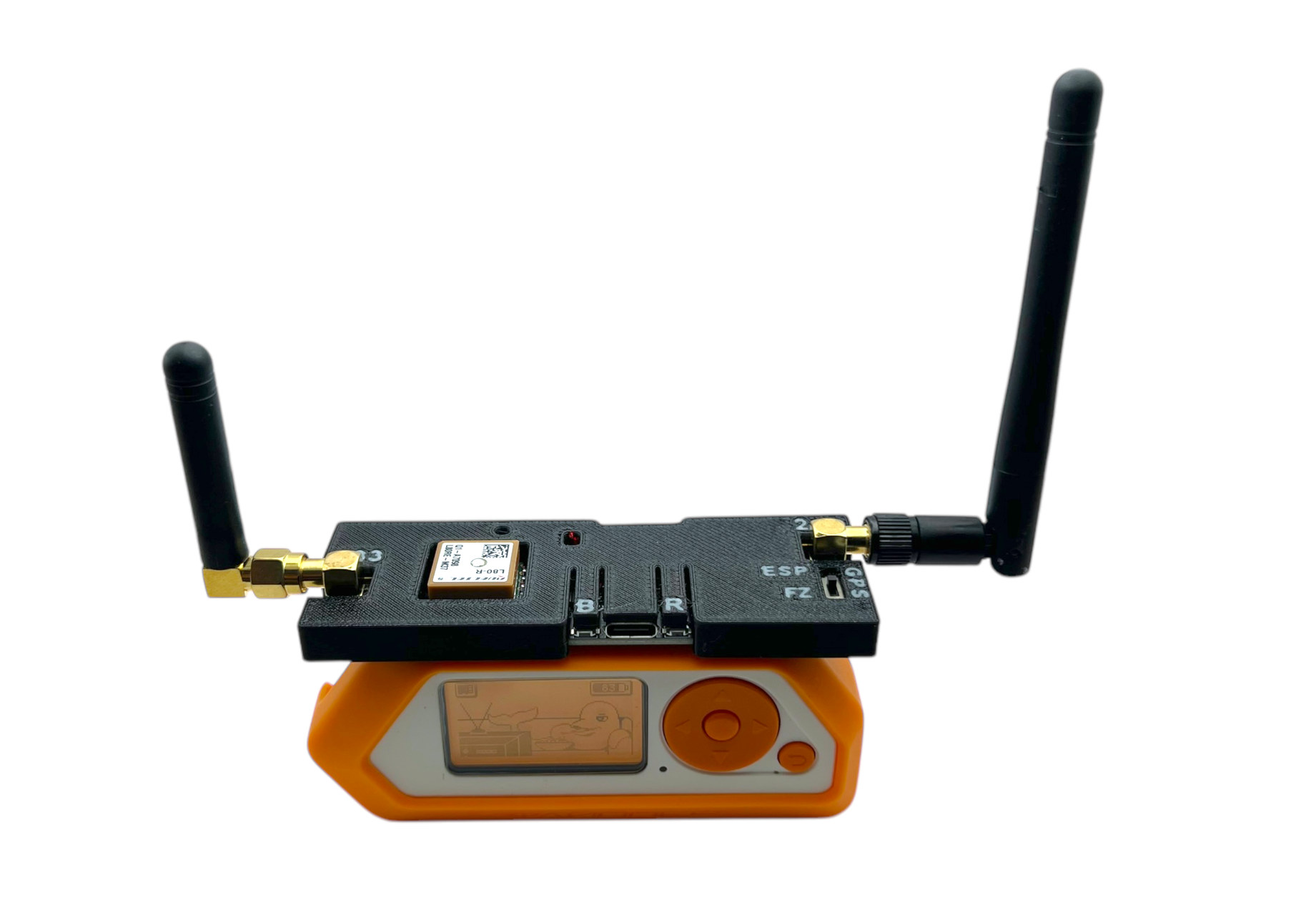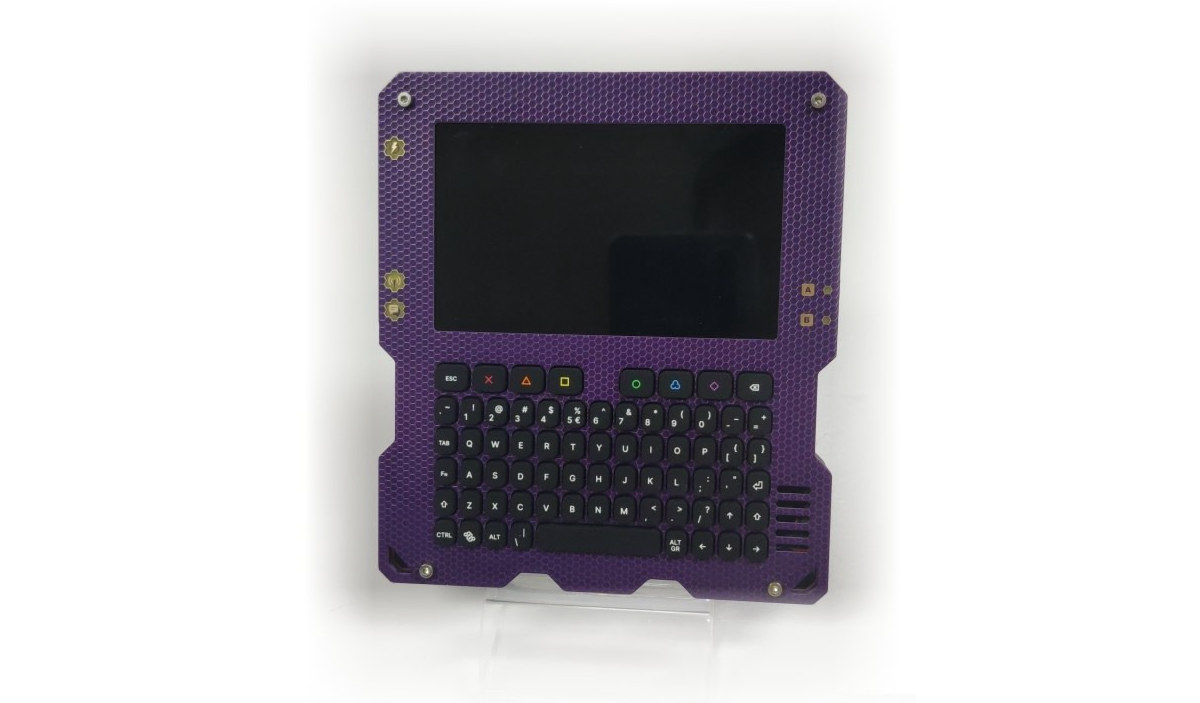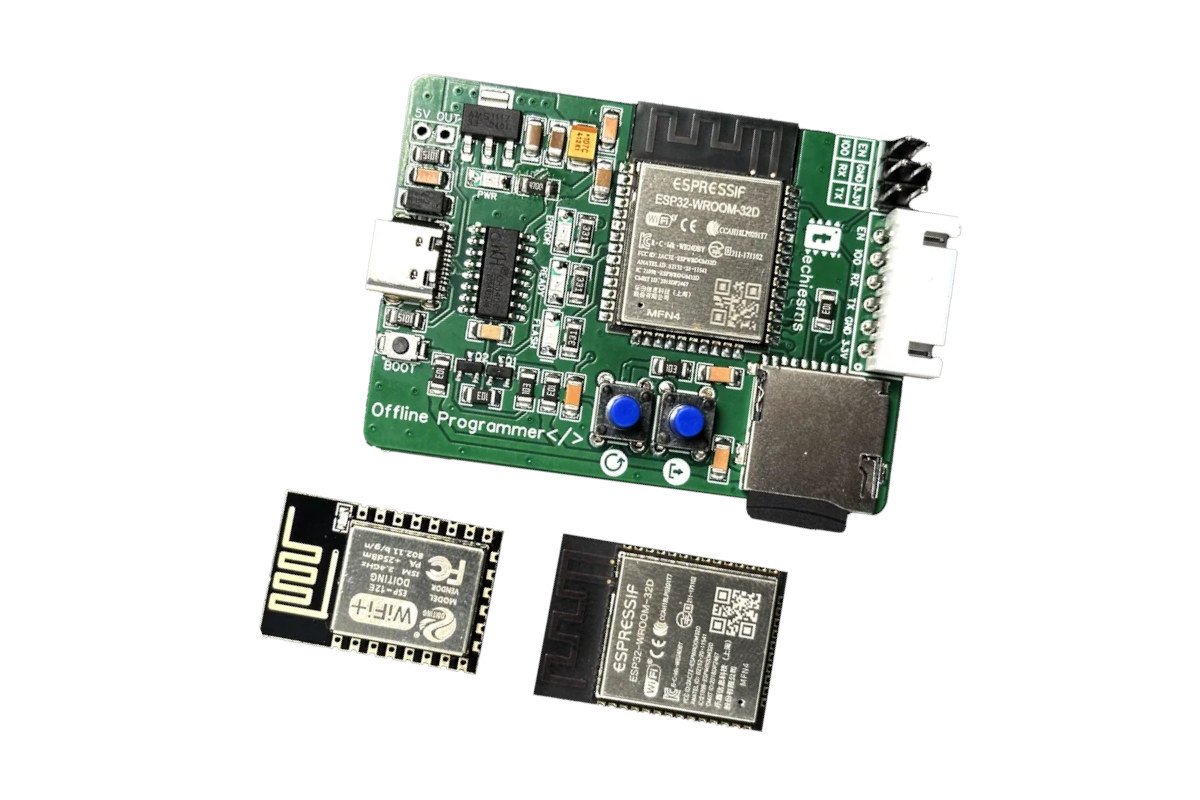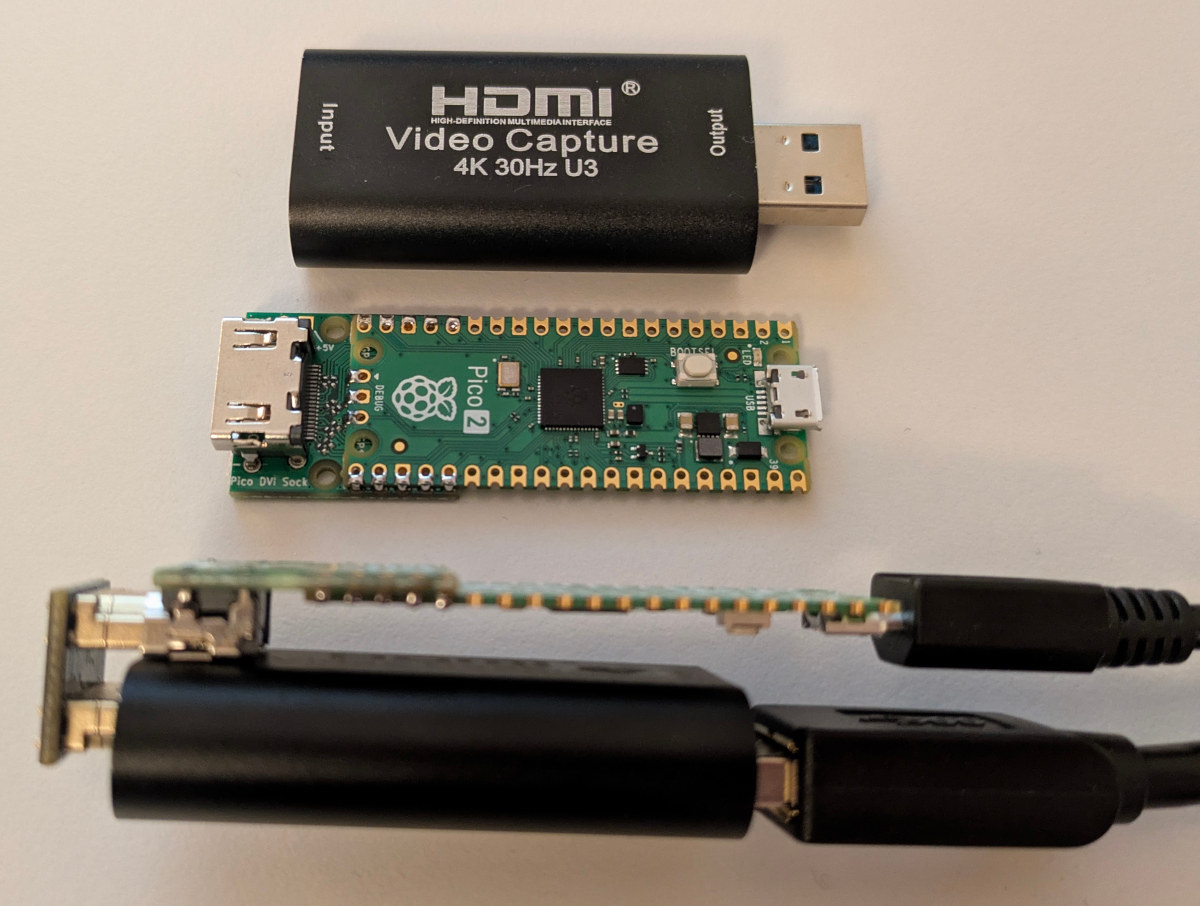Pimoroni Presto is a 4-inch desktop color touch display powered by a Raspberry Pi RP2350 microcontroller, and equipped with a Raspberry Pi RM2 wireless module for WiFi 4 and Bluetooth connectivity. The display comes with 16MB of SQPI flash and 8MB of PSRAM, seven RGB LEDs for ambient lighting, a microSD card slot, a piezo speaker, a Qwiic/STEMMA QT connector for expansion, a USB-C port for power and programming, and a 2-pin JST connector for an optional battery. Pimoroni Presto specifications: Microcontroller – Raspberry Pi RP2350B MCU CPU Dual-core Arm Cortex-M33 @150MHz with Arm Trustzone Dual-core 32-bit Hazard3 RISC-V @ 150MHz Up to two cores can be used at the same time Memory – 520KB SRAM Package – QFN-80; 10×10 mm Memory – 8MB PSRAM Storage 16MB QSPI flash MicroSD card slot Display – 4-inch square IPS LCD screen with 480 x 480 resolution, capacitive touchscreen Wireless – Raspberry Pi […]
Battery-powered Seeed Studio IoT Button features ESP32-C6 SoC, supports ESPHome or Zigbee firmware
Seeed Studio IoT Button is an inexpensive ESP32-C6 button powered by a rechargeable 18650 battery and designed to easily and quickly control Smart Home devices over WiFi 6 or Zigbee wireless protocol. It will be especially handy to Home Assistant users since the device is pre-flashed with ESPHome firmware for easy integration (over WiFi), and the company also provides a Zigbee firmware for Zigbee Home Assistant (ZHA) integration. The hardware is pretty basic with a button, three LEDs, and a USB-C port for charging the replaceable 18650 battery. Seeed Studio IoT Button specifications: SoC – ESP32-C6FH4 CPU Single-core 32-bit RISC-V clocked up to 160 MHz Low-power RISC-V core @ up to 20 MHz Memory – 512KB SRAM, 16KB low-power SRAM Storage – 320KB ROM, 4MB flash Wireless – 2.4 GHz WiFi 6, Bluetooth 5.0 LE/Mesh (somehow not used here), 802.15.4 radio for Zigbee 3.0 and Thread. Matter compatible. USB – […]
The Pebble Smartwatch is back with the Core 2 Duo and Core Time 2 models running PebbleOS open-source firmware
The Pebble Smartwatch was first introduced in 2012 with a black and white e-Paper display, a week of battery life, and an amazingly successful Kickstarter company that raised over 10 million dollars. It was followed by the Pebble Time with a color display in 2015, and the Pebble 2 & Time 2 watches followed in 2016. But then it all went south from there, and Pebble’s assets were purchased by Fitbit in December 2016, all projects were canceled that year, and cloud services were discontinued in June 2018. Since then, the community has taken over working on the Rebble project to keep existing watches running, and Google acquired Fitbit in 2021. However, the project is slowly coming back to life. First, Google released the source code for the Pebble smartwatches and Pebble’s founder, Eric Migicovsky, and a team of engineers worked on reviving the project which now culminates with the […]
FlashMyPico – Raspberry Pi Pico / Pico 2 code editing and firmware flashing from a web browser
FlashMyPico website allows you to write C code, build the firmware, and flash it to your Raspberry Pi Pico, Pico W, Pico 2, or Pico 2 W directly from a web browser instead of having to check out the code from GitHub, build it in a terminal, and then manually copy the resulting binary. I’ve given it a quick with a Raspberry Pi Pico 2 board. The first step is to head over to flashmypico.com from your computer or even an Android smartphone. You’ll need a web browser that supports WebUSB, so for example, Firefox is not an option, and I eventually had to use Google Chrome instead. There’s a detect device link on the bottom left, so I clicked on that first, and my Raspberry Pi Pico 2 was detected as “RP2350 Boot” after I put it in bootloader mode. But it just told me that my board is […]
FlipMods Combo is a 3-in-1 Flipper Zero expansion module with ESP32, GPS, and CC1101 modules
Sacred Labs’ FlipMods Combo is a 3-in-1 expansion module for the Flipper Zero that combines an ESP32 WiFi and Bluetooth SoC, Texas Instruments CC1101 Sub-GHz wireless microcontroller, and an unnamed GPS module. The expansion module is housed in a neat 3D-printed case and features a built-in GPS antenna, external WiFI/Bluetooth & Sub-Ghz antennas, as well as a switch to send the GPS data to the ESP32 chip or the Flipper Zero. The ESP32 module is preloaded with the Marauder firmware also used in the ESP32 Marauder Pocket Unit and Mayhem v2 for Flipper Zero for penetration testing with Wi-Fi scanning, de-authentication attacks, packet sniffing, and more. FlipMods Combo specifications: Wireless modules ESP32-WROOM-32UE for WiFi and Bluetooth; external SMA antenna (long) Texas Instruments CC1011 for 315, 433, 868, and 915MHz ISM bands; external SMA antenna (short) GPS module with internal antenna Storage – MicroSD card slot up to 32GB USB – […]
Tanmatsu handheld terminal features ESP32-P4 RISC-V MCU, QWERTY keyboard, WiFi, Bluetooth, 802.15.4, and LoRa connectivity
Tanmatsu is a handheld terminal device for hackers, makers, and tech enthusiasts based on the 400 MHz ESP32-P4 RISC-V microcontroller, including a QWERTY keyboard, and supporting various connectivity options with WiFi, Bluetooth LE, 802.15.4, and even LoRa in the 433 MHz or 868/915MHz bands. The handheld computer also features a 3.97-inch MIPI DSI display, a built-in speaker and a 3.5mm audio jack, and various expansion connectors such as a Qwiic connector for I2C/I3C modules, and PMOD and SAO expansion connectors. Tanmatsu specifications: Microcontrollers Espressif ESP32-P4 dual-core RISC-V microcontroller @ 400MHz with 32MB of built-in PSRAM WCH CH32V203C8T6 32-bit RISC-V microprocessor @ up to 144 MHz with 20KB SRAM, 64KB flash used for keyboard matrix and power management Storage 16MB flash for firmware MicroSD card slot supporting SD cards at 3.3v and 1.8v voltage levels (SDIO 3) Display – 3.97-inch MIPI DSI display with 800 x 480 resolution, 65,536 colors Audio […]
ESP Offline Programmer flashes firmware to ESP32 and ESP8266 modules without PC
The ESP Offline Programmer is an ESP32 board with a microSD card slot designed to flash the firmware to other ESP32 or ESP8266 modules without a PC. You’ll still need one to copy the firmware to a microSD card, but once it’s done you can just insert the microSD card into the board and after wiring is done ideally using a jig, start the flashing sequence with the press of a button. In some ways, it’s the hardware equivalent of the esptool utility and can be useful for remote deployment where carrying a laptop may not always be convenient and potentially for flashing hundreds or thousands of modules using multiple ESP Offline Programmers in a way that’s faster than using computers. ESP Offline Programmer specifications: Wireless module – Espressif Systems ESP32-WROOM-32E ESP32 dual-core Tensilica LX6 microcontroller Storage – 4MB flash Wireless 2.4 GHz WiFi and Bluetooth LE connectivity, built-in PCB […]
High-speed data acquisition with Raspberry Pi Pico 2’s HSTX interface and HDMI to USB 3.0 video capture dongle
We previously explained the HSTX high-speed serial transmit interface of the Raspberry Pi RP2350 microcontroller was mostly useful for video outputs and display interfaces since it can only transmit, and not receive data. But Steve Markgraf found another use case for the HSTX interface – high-speed data acquisition – combining a Raspberry Pi Pico 2 board with the DVI Sock board for Pico and one of those cheap MS2130-based HDMI to USB 3.0 video capture dongles. He managed to stream out up to 75 MB/s of real-time data from an overclocked RP2350 to a host computer with a USB 3.0 port. The Adafruit Feather RP2350 HSTX board should also work, but also not been tested. Steve’s “hsdaoh-rp2350” data acquisition over HDMI firmware is based on the dvi_out_hstx_encoder example from Raspberry Pi using the HSTX interface for DVI output and code by Shuichi Takano implementing the HDMI data island encoding required […]


